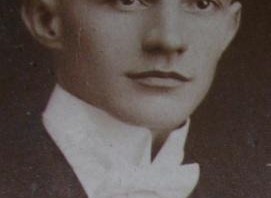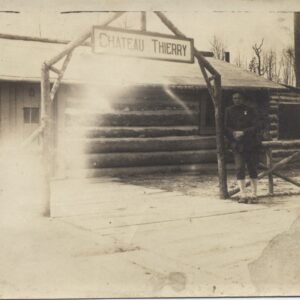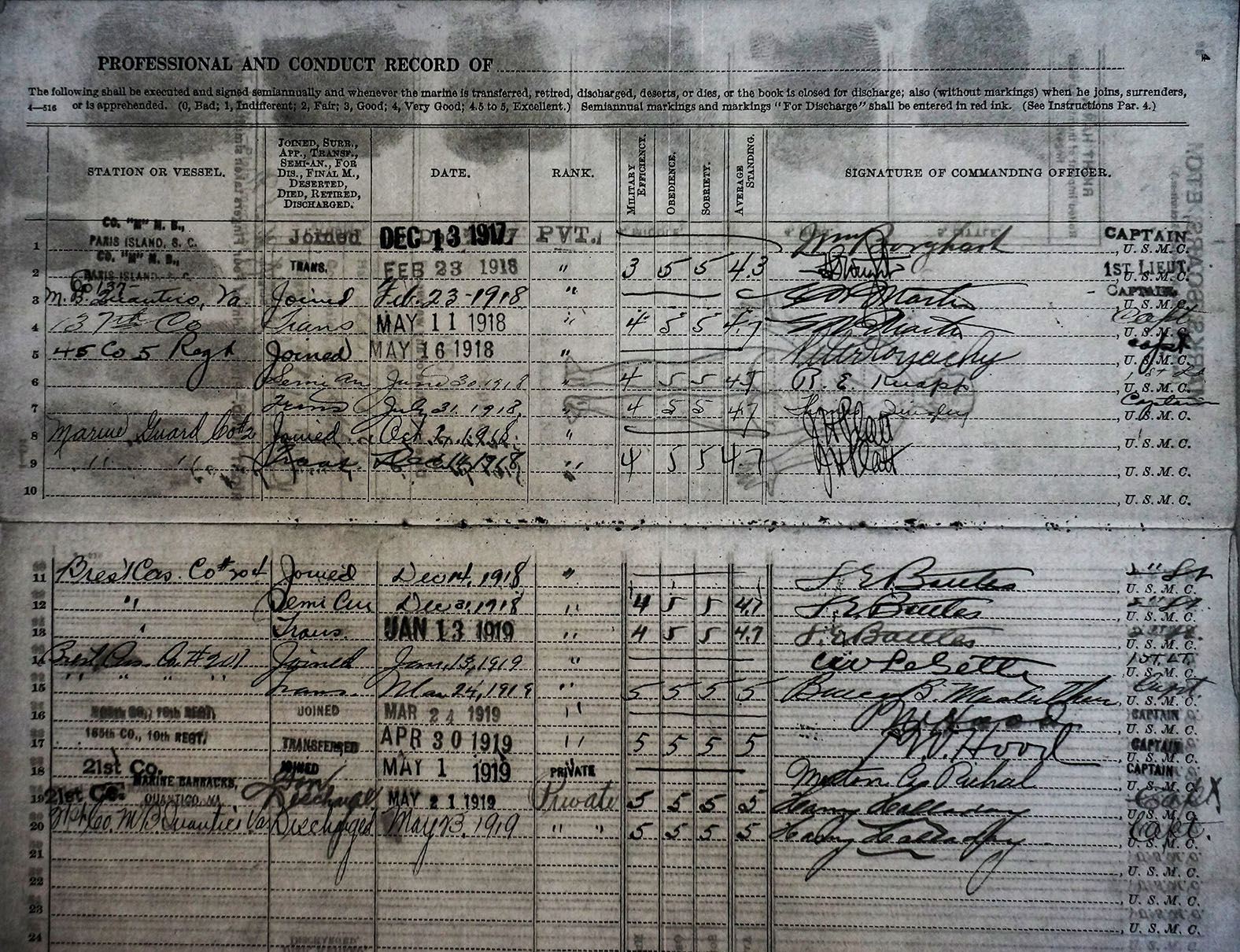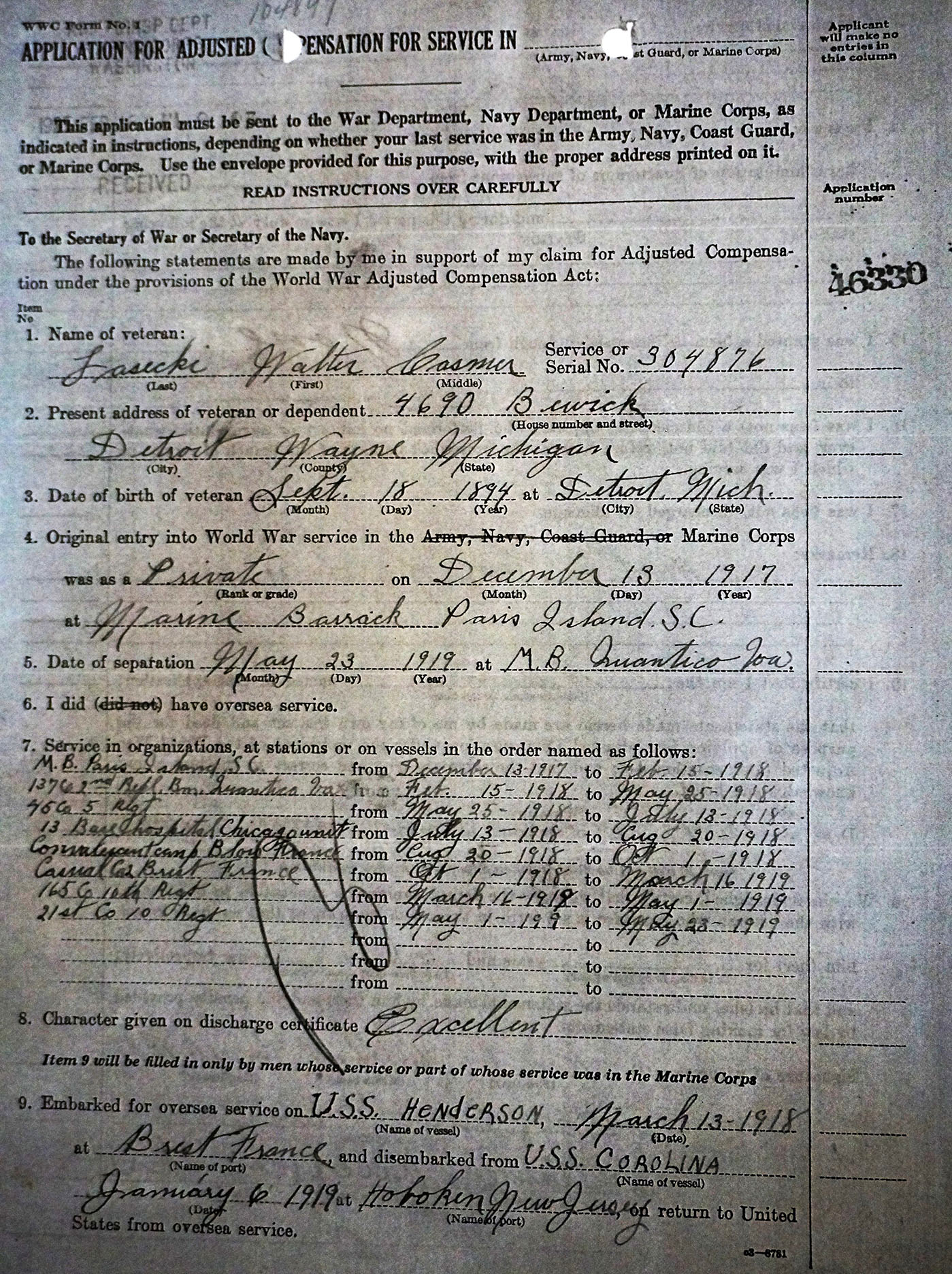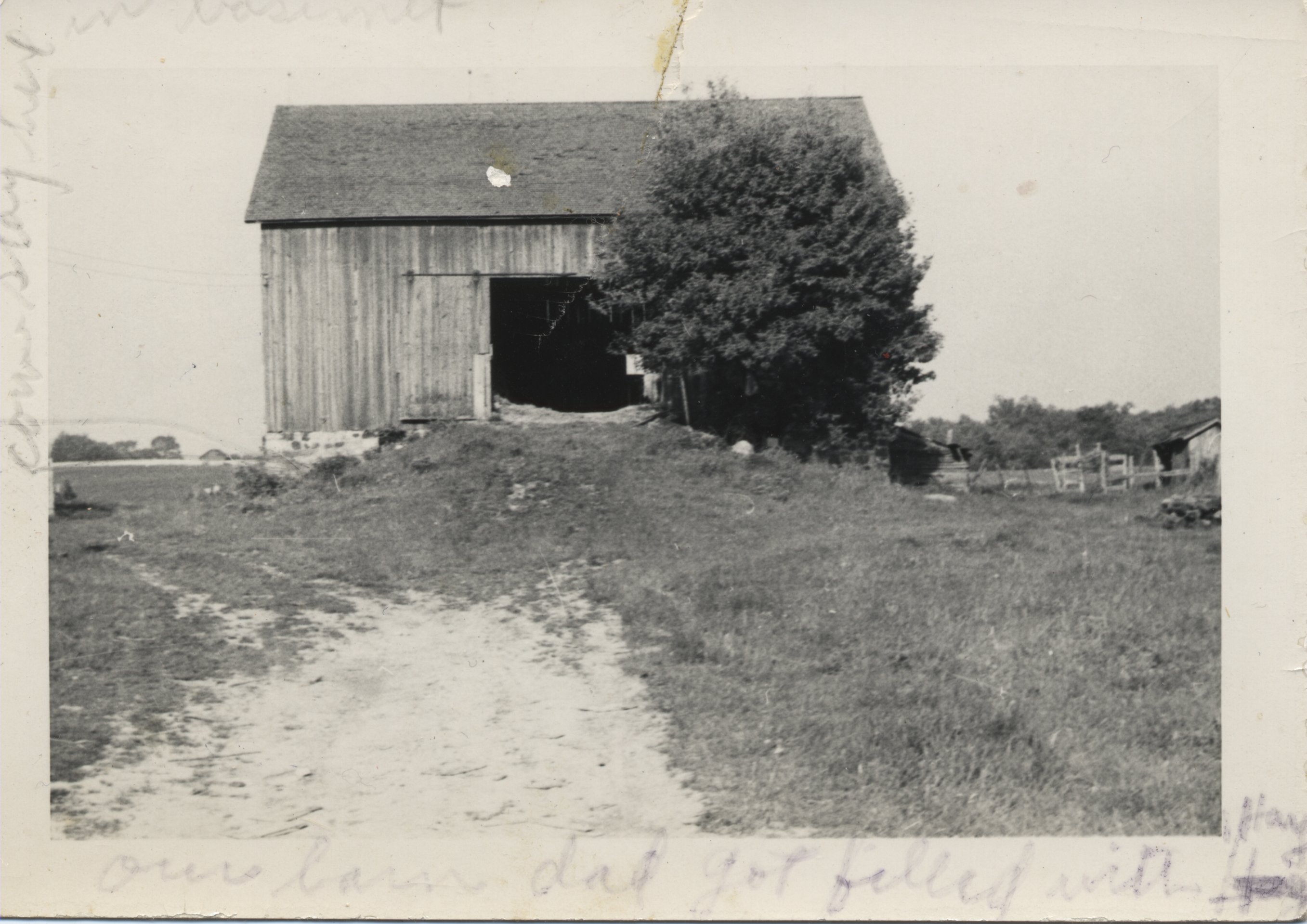Walter (Władysława) Casimir Łasecki

Son of Anthony Łasecki & Michalina Dych, born 18 Sep 1894 Detroit, MI. Where his parents had been living with his paternal grandmother. Godparents were??
The 1900 Census lists Walter as 5 years old living at 119 Superior Street in a mortgaged home in Ward 3 District 30, Detroit, with his father, Anton (31~ a stove moulder) mother Michalina (27) sister Marry (8 ~ at school) brother Paul (2) and his Grandmother Frances (who is 75, a widow; she had 7 children, 3 of whom are still alive). Frances and Antoni came over in 1880 and Michalina immigrated with her parents and her sister Constancia in 1881.
Where did he attend school? According to the 1940 census, Walter attended school until the fifth grade. His younger brother, Alec would be able to attend until the ninth grade.
The 1910 census misspells the name as Lasistski, which is sort of how the name would sound in Polish! Looks like they are still on Superior Street. Walter’s Gramma Frances no longer lives with them. His father is a moulder in the iron foundry, though he had been out of work for 36 weeks of the year already. This is the year his father abandoned the family. His mother is a washer woman for families, big sis Mary is a cigar packer at a cigar manufacturing company, and Walter is a woodworker at the auto plant.

Walter had a difficult early life because of his alcoholic father who left the family when Walter was 16 in 1910. Walter dropped out of school to get a job and help support the family. Though he had an older sis, Marry (Marie), Walter was the eldest son and helped raise the younger ones. Rosemary was born in 1910. Marie did not marry Frank Breycha until 1922.
WORLD WAR 1 (July 28, 1914 – November 11, 1918)
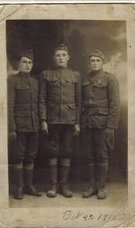
3 Dec. 1917 Walter enlists in the U.S. Marines in Detroit and was accepted the same day as a private.
His personal description is: 5 ft. 7 inches, 159 lbs. light brown hair, brown eyes, ruddy complexion, 20/20 vision in both eyes, and shoe size 8.5 F. I guess that’s where some of us grandkids get the wide feet!! He was 24 years old, he listed working as an auto body trimmer, (Fisher Body Plant 21).
6th of Dec 1917 transferred to Marine Barracks, Parris Island, SC. where he received Basic Training.
His buddie, Frank Pryzyblski (see photo at right), who would later become his brother-in-law, married to Sophie Moraniec.
Muster Rolls for Jan 1918 show Pvt. Lasecki in Company “L”, Marine Barracks, Parris Island, SC.
Feb. Muster rolls show him in Company “M”, Marine Barracks, Parris Island
Walter was on furlough from Feb 1-28, 1918? ??
He was transferred on 28 Feb, 1918, to 137th Co., 2nd Replacement Battalion, Marine Base, Quantico, This was the Brest Casualty Co. He served in Quantico until 11 Mar 1918.
13 Mar 1918 He embarked on the USS Henderson for France. He arrived in France on Mar. 27 1918.
In France, Pvt. Lasecki served with the army beginning 27 Mar, 1918.
April 1918 Muster shows Walter in the 137th Company , Replacement Battalion, 32nd Division, AEF (American Expeditionary Forces). Pvt. Lasecki was a Messman from 19 April until 30 April 1918. He performed his duties, the records indicate, excellently.
May Muster rolls show Walter still in the 137th company, 2nd Battalion.
At some point in May, he was in Coublanc, France and transferred into the 45th Co. Coublanc is about 300 miles from the village of Bouresches, which is where Walter would see battle on 1 June! they motored until they were about 25 miles northeast of Paris, where, according to A Brief History of The 5th Marines, after Meaux, marching was difficult due to the heavy loads the Marines carried, “long grades over dusty roads, the intolerably hot weather, and the sight of the physically tired andvisibly dejected French soldiers” retreating.
From the 4th Marine Brigade in WW 1 (Marine Corps University (https://www.usmcu.edu/Research/Marine-Corps-History-Division/Research-Tools-Facts-and-Figures/Chronologies-of-the-Marine-Corps/World-War-I-1917-1919/):
“30 May 1918 – 2d Division begins moving up to check the Germans. The 9th Infantry and the 5th Marines, the lead elements, are initially spread across the entire rear of the retiring XXI French Corps. … When the Germans approached the Marines’ lines, Marine rifle fire began killing them at 800 yards. German officers, who did not teach their men to shoot at individual targets, first thought they had encountered a panicky unit. But as their casualties mounted, they became convinced they were facing a unit armed with nothing but machine guns. Their advance stalled and never regained its momentum. Their drive on Paris was stopped.”
June 1918 military records show he was a cook, 2nd class for the 1st Division, 5th Regiment, 45th Co. The official mission of the 5th was:
On order, 5th Marine Regiment deploys as the Ground Combat Element (GCE) for the 1st Marine Division in support of crisis response operations and provides mission capable battalions in support of enduring and emerging operational requirements in order to meet operational commitments across the range of military operations.
From 11 May 1918 until July 31, 1918, Walter was in the 45th Company Replacement Battalion, 5th Regiment.
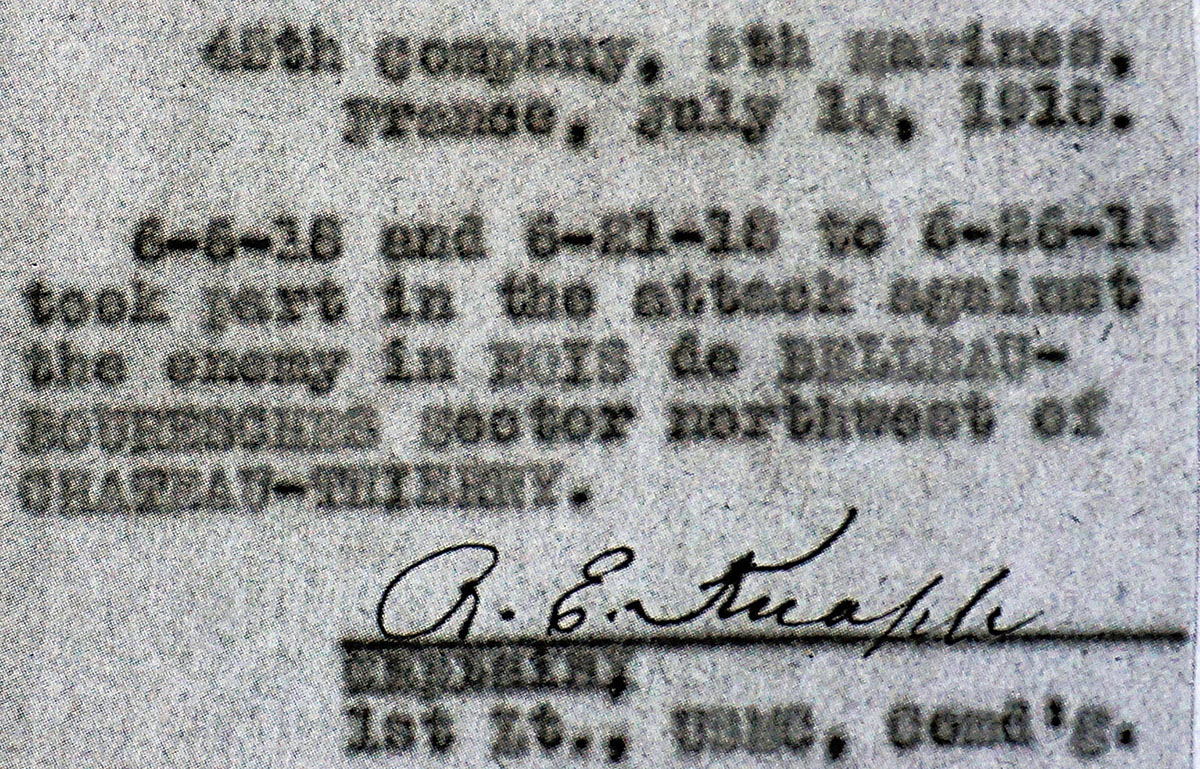 He was involved in the brutal battle for Belleau Woods. This was part of The Battle for the Marne in more general terms. A couple of years ago, a museum opened to commemorate the battle. If you are in France, head to Belleau, Aisne, Picardie, Chateau-Thierry. You wouldn’t want to miss visiting!
He was involved in the brutal battle for Belleau Woods. This was part of The Battle for the Marne in more general terms. A couple of years ago, a museum opened to commemorate the battle. If you are in France, head to Belleau, Aisne, Picardie, Chateau-Thierry. You wouldn’t want to miss visiting!
The Official Website of the U. S. Marines opens its history page with this telling paragraph:
“The activation of the Fifth Marines dates back to June 1917, just prior to the U.S. force deployment to France during World War I. The Regiment won its nickname, the “Fighting Fifth,” on the battlefields of western Europe. So fierce were its efforts in the Battle of Belleau Wood and subsequent victories that the French government awarded the Regiment the Croix de Guerre with two palms and one gilt star. Today, each Marine serving in the Regiment also wears the Fourragere, a French unit award, on the left shoulder of their uniform to recognize the legacy and valor of their predecessors.”
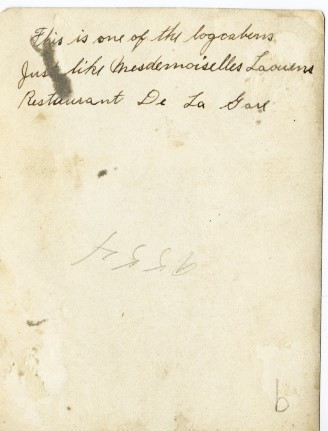
Walter was part of the attack on the enemy in the Bois de Belleau Bouresches sector on 6 Jun 1918 (said to be the deadliest day of the 3 week battle.) According to a post by Wendi Maloney, The Battle of Belleau Wood from the Library of Congress Blogs, on 6 June 2018, more than 1,000 were wounded and 222 died. On the 7 Jul, 1918 he was sick in a French convalescent camp at Blois. This “hospital,” was a bombed farmhouse. His sprained knee was later diagnosed as synovitis,
The week of 21 Jun – 26 Jun 1918, Walter again was engaged in the battle. This time it was to repel the German Spring Offensive. This third offensive by the Germans reached the river at Chateau-Thierry, only 59 miles from Paris!). Once the Germans had gained the Chateau (1 June), they headed for Belleau Wood, to the northwest. The 5th Regiment of Marines was placed in reserve.
The German line now lay from Vaux, to Bouresches to Bealleau. Records from the National Archives indicate Pvt.. Walter Lasecki took part in the attack against the enemy in the Bois de Belleau, Bouresches sector northwest of Chateau Thierry with the 45th Company, 5th Marines. Bouresches is a French village near the Marne River, and the woods was the Count of Belleau’s game preserve. However, other records, please see below, show that he was in fact, in the 6 June battle for Belleau Wood …and, the 4th Marine Brigade is credited with securing Bouresches.
From an account from the Belleau Wood Trail Map pdf:
June 3-5
“The 2nd Division, with the French 167th Division on its left,
attacked on a front from Hill 142 to Bouresches to the south of
Belleau Wood. The Marines suffered heavy casualties as they
advanced across a waist-high wheat field strewn with red poppies.
During the fighting for Hill 142, Gunnery Sergeant Ernest Janson
became the first Marine of the war to earn the Medal of Honor, and
Sergeant Major Dan Daly led his men forward with the legendary
cry, “Come on, you sons of bitches! Do you want to live forever?”
Marines also attacked Bouresches and the south corner of Belleau
Wood, again suffering heavy casualties. The Marine brigade
suffered 1,087 killed and wounded, with more men killed in action
in one day than the Marines had lost in their previous 143-year
history. The Germans reported their enemy to be “Stubborn and
not afraid of his losses….” Patrols and probing attacks continued
through the night. ”
More information from the same pdf. regarding the Marine positions, and the daily gas used:
“Lucy-le-Bocage Two miles south-southwest of Belleau is the
crossroad village of Lucy-le-Bocage. From there, lanes radiate toward
Hill 142, Bouresches, Belleau Wood, and Belleau. Before the 2nd
Division attacked Belleau Wood, it defended Lucy-le-Bocage from
German attacks on June 4. The Marines attacking Belleau Wood
started from Lucy-le-Bocage. It was their brigade reserve position,
supply source, and evacuation route for casualties. Lucy-le-Bocage
was shelled with gas and high explosives daily by the Germans.”
And continuing on the same pdf:
June 6 — Walter was in this battle for Bouresches.
The 2nd Division, with the French 167th Division on its left,
attacked on a front from Hill 142 to Bouresches to the south of
Belleau Wood. The Marines suffered heavy casualties as they
advanced across a waist-high wheat field strewn with red poppies.
During the fighting for Hill 142, Gunnery Sergeant Ernest Janson
became the first Marine of the war to earn the Medal of Honor, and
Sergeant Major Dan Daly led his men forward with the legendary
cry, “Come on, you sons of bitches! Do you want to live forever?”
Marines also attacked Bouresches and the south corner of Belleau
Wood, again suffering heavy casualties. The Marine brigade
suffered 1,087 killed and wounded, with more men killed in action
in one day than the Marines had lost in their previous 143-year
history. The Germans reported their enemy to be “Stubborn and
not afraid of his losses….” Patrols and probing attacks continued
through the night.
Walter returned to the battle…And this time, to Belleau Wood. from the same pdf:
June 22-26
“Between June 22 and 24, U.S. Army machine gun battalions, units
of the Marines’ 5th and 6th Regiments, and the 6th Machine Gun
Battalion returned to Belleau Wood. After a day-long artillery barrage
on June 25th, the Army and Marine machine gunners attacked.
Fighting well into the evening, they took the northern end of the
woods and captured over 500 Germans. German counterattacks on
the 26th were repulsed and Belleau Wood was firmly in Allied hands. ”
There is interesting commentary by David John Ulbrich, Ph.D. The Importance of the Battle of Belleau Wood. It includes a map as well as describing just how important, how courageous and brave our soldiers were in this battle that our grandfather served in!
The following information is from Doughboy Center.
On 8th June, the American assault failed to gain ground. On the 11th June, following heavy shelling, the Marines took 2/3 of the Woods. It is reported the men are near complete physical exhaustion. In the battle, it received a heavy gas attack on 13 Jun 1918 as the Germans almost recaptured Bouresches. There was heavy bombardment from the Germans on the 15th of June.
If you are interested, there is a fascinating account online by Colonel William T. Anderson, USMCR (Ret), titled, The Bravest Deeds of Men., A Field Guide for the Battle for Belleau Wood.
Walter must have re- injured his knee that week in Bouresches, because, From 13 July 1918 until 20 Aug. 1918, Pvt. Lasecki was at the 13 Base Hospital, Chicago unit. And then from 20 Aug 1918 until 1 Oct., he was again at the convalescent Camp at Blois, France. According to AMEDD Center of History and Heritage, Camp Hospital 25.
The 43rd Base Hospital was stationed in Blois, France, an ancient city located on a hill overlooking the north bank of the Loire River, midway between Tours and Orléans. The area is rich in history. In 1429, Joan of Arc began her siege of Orléans from Blois. During World War I, the city was home to a reclassification camp for officers and a concentration/reclassification camp for discharges from the American Expeditionary Forces hospitals.[22] Base Hospital 43 occupied 7 buildings in all including the “Mixte Hospital,” which was constructed by the Benedictine order in 854 AD.[10] Staff were divided into surgical and medical teams that worked together in shifts. Although organized as a 500-bed unit, the normal capacities of the facilities were 1000 beds. In an emergency, it could expand to 1397 beds.[10] By the end of their tour of duty, the census would climb to over 2000 patients.” The census in July was 416. (MedGenMed. 2007; 9(3): 10. Base Hospital 43: The Emory Unit, Margaret A. Clark, MS, RN, RRT-NPS, Editorial Director). Published online 2007 Jul 11. N.B. this also has Red Cross info.
The grateful French have renamed the Wood, “Bois de la Brigade de Marine.”
1 Oct. 2018 Walter joined Marine Guard Company #2. Muster rolls in October show Pvt. Lasecki in Co.C First Training Regiment, Machine Gun Battalion
15 Dec. 1918 he joined the Brest Casual Company 204. At some point in December, Walter mustered in at Cardiff, Wales, Supplementary 136th Company, US Marines, US Naval Base #29.
26 Dec 1918 Walter received a late Christmas present as he was shipped out of France on the U.S.S. North Carolina, arriving in the Overseas Depot, Quantico, VA on 7 Jan 1919.
14 Jan 1919 Walter mustered with the Brest Casual Co. 201, but the next day he was on furlough. 15 Jan. 1919 – 15 Mar. 1919. (the following record says from 1 Feb. 2019 – 24 Mar) Happy New Year! He stayed with the Brest company until 16 March 1919.
From 16 Mar 1919 – 30 Apr, Walter was in the 165 Company, 10th Regiment, Marine Barracks, Quantico, VA.
1 May 1919 until 23 May, he was in 10th Regiment 21st Company. He received his official discharge from the U.S. Marines, 23 May 1919 and July Muster shows him on the Addenda Roll, AEF.
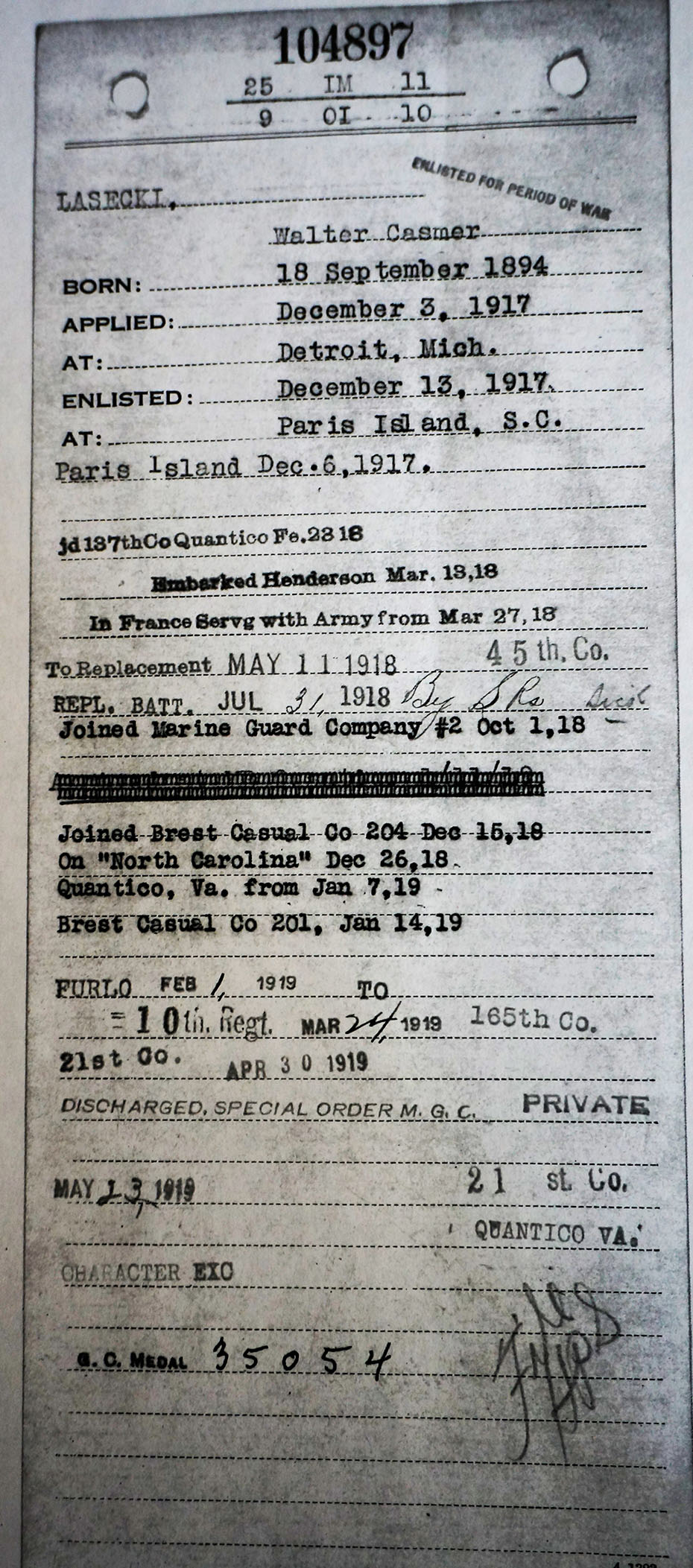 Walter did not receive any battle wounds, but his records indicate he was “hurt in the line of duty.” He was gassed (mustard) in one engagement, but was not badly affected. On 30 Aug 1918, he was transferred to St. Aignan, Camp Hospital 26. According to AMEDD Center of History and Heritage, this was not the main hospital, that was at Noyer. Hospicede St. Aignan was a 200 bed Annex. Gramma Helen Moraniec Lasecki received the Disabled American Veterans magazine when she lived with us.
Walter did not receive any battle wounds, but his records indicate he was “hurt in the line of duty.” He was gassed (mustard) in one engagement, but was not badly affected. On 30 Aug 1918, he was transferred to St. Aignan, Camp Hospital 26. According to AMEDD Center of History and Heritage, this was not the main hospital, that was at Noyer. Hospicede St. Aignan was a 200 bed Annex. Gramma Helen Moraniec Lasecki received the Disabled American Veterans magazine when she lived with us.
Walter’s buddie, Frank was also tranferred to Quantico, but his remarks state: ” 2 Qual S.S.Army Course: 19 S.S. badge delivered, 23, to 137th Co., 2nd Replacement Battalion, MB Quantico, VA.” 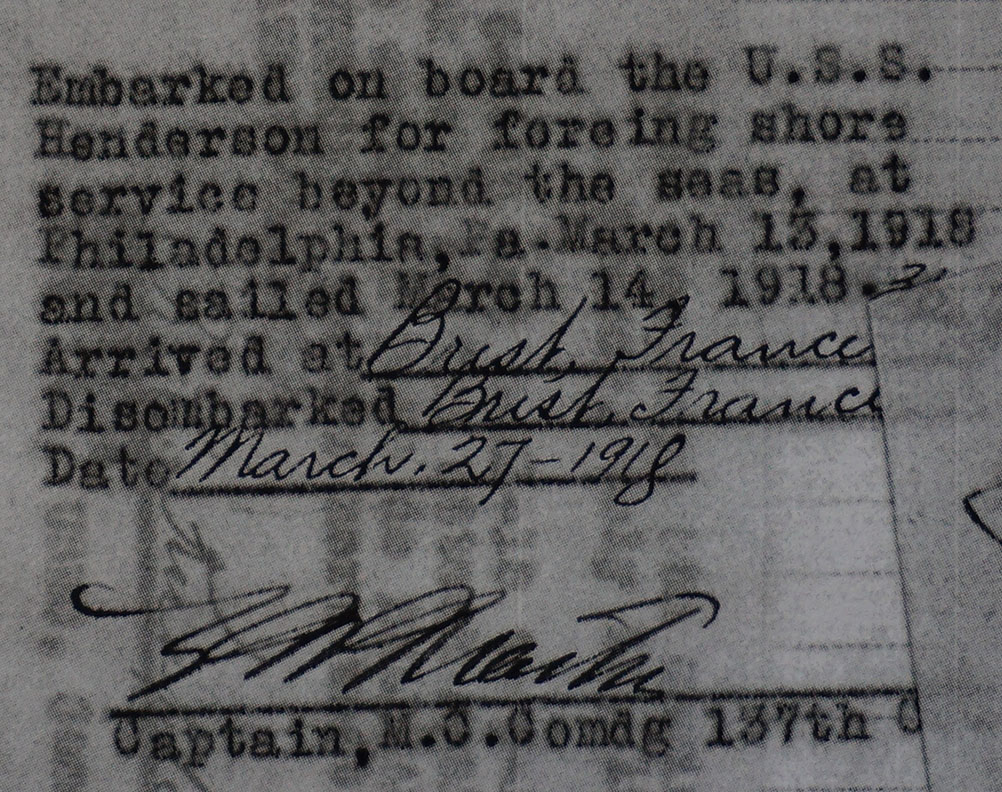
 Walter embarked on the USS NORTH CAROLINA at Brest, France 26 Dec 1918 and arrived in the US (Hoboken) on 6 Jan 1919. Mar 1919 he was in the 10th Regiment, Quantico.
Walter embarked on the USS NORTH CAROLINA at Brest, France 26 Dec 1918 and arrived in the US (Hoboken) on 6 Jan 1919. Mar 1919 he was in the 10th Regiment, Quantico.
Pvt. Lasecki was honorably discharged on 23 May 1919 at 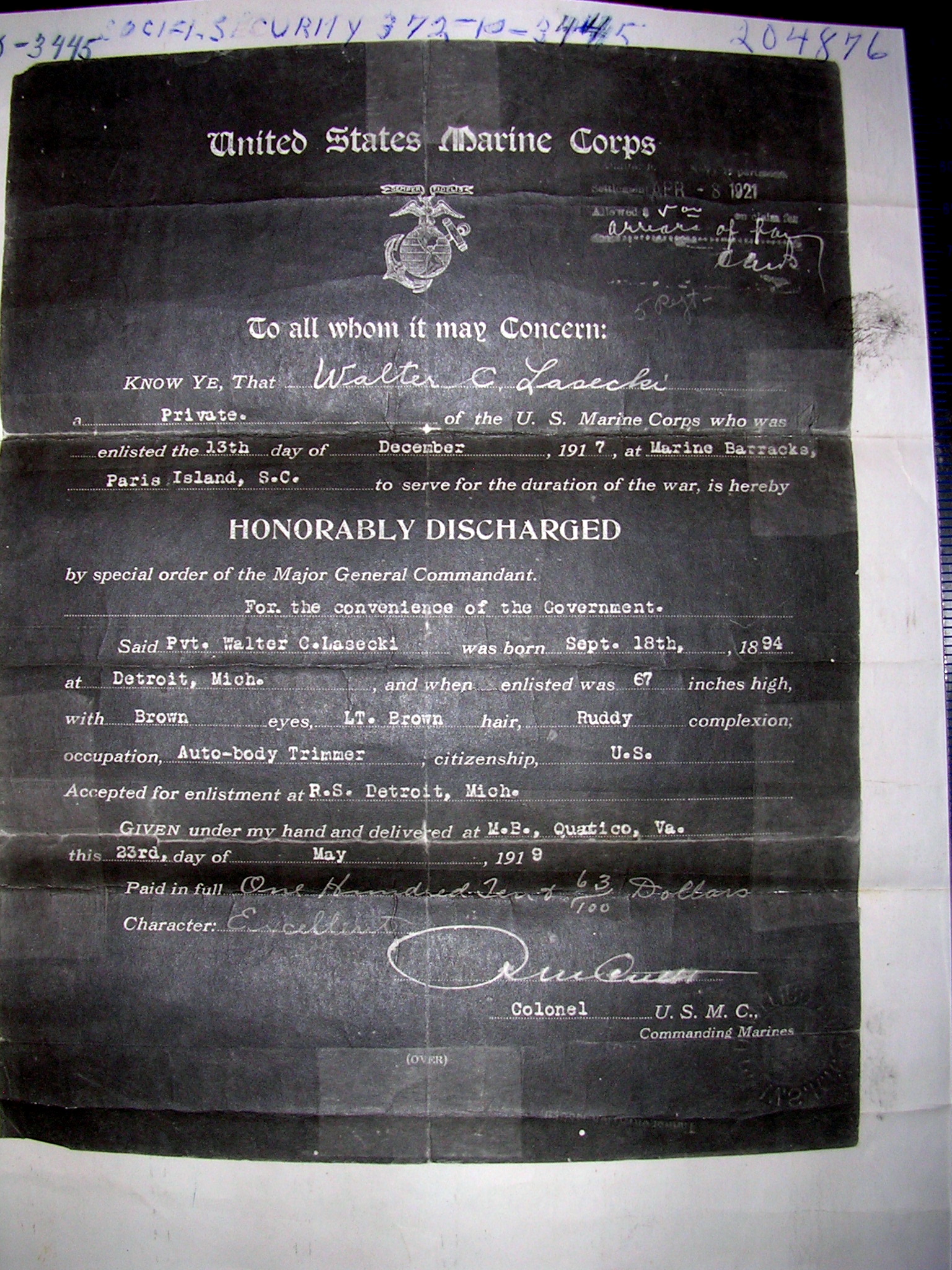 Quantico Marine Base, VA. He received the Good Conduct Medal.
Quantico Marine Base, VA. He received the Good Conduct Medal.
He then returned to Detroit and his old job in the factory 13 Dec 1917-23 May 1919 (after war ended). Walter worked his way up to the position of upholstery trimmer for specialty Cadillac orders….he was a member of United Auto Workers. Fleetwood plant of Fisher Body –later General Motors (1913). Marie Kieber-Emmons has a pair of upholstery needles that Walter used. In 1941, on his WW2 draft registration, Walter is listed as working for Fisher Body, Harper, Aircraft Unit.
We know that he worked on automobile seat upholstery. He taught Helen how to upholster and she re-did many of the family chairs over the years. Helen went on to teach granddaughter Marie how to upholster.
MARRIAGE:
 Walter Lasecki and Helen Moraniec Marriage cert. 1919
Walter Lasecki and Helen Moraniec Marriage cert. 1919
Walter had been introduced to Helen by his friend Stanley Kuczkowski who later married Helen’s older sister Mary….shortly after the war Helen and Walter were married.
Fr. Raymond Marciniak, Pastor, married them on the 9th 0f Sept. 1919 in Sweetest Heart of Mary Church, Detroit. Walter was 24; Helen was 22. Sophia Moraniec and Frank Pryzbylski were witnesses.
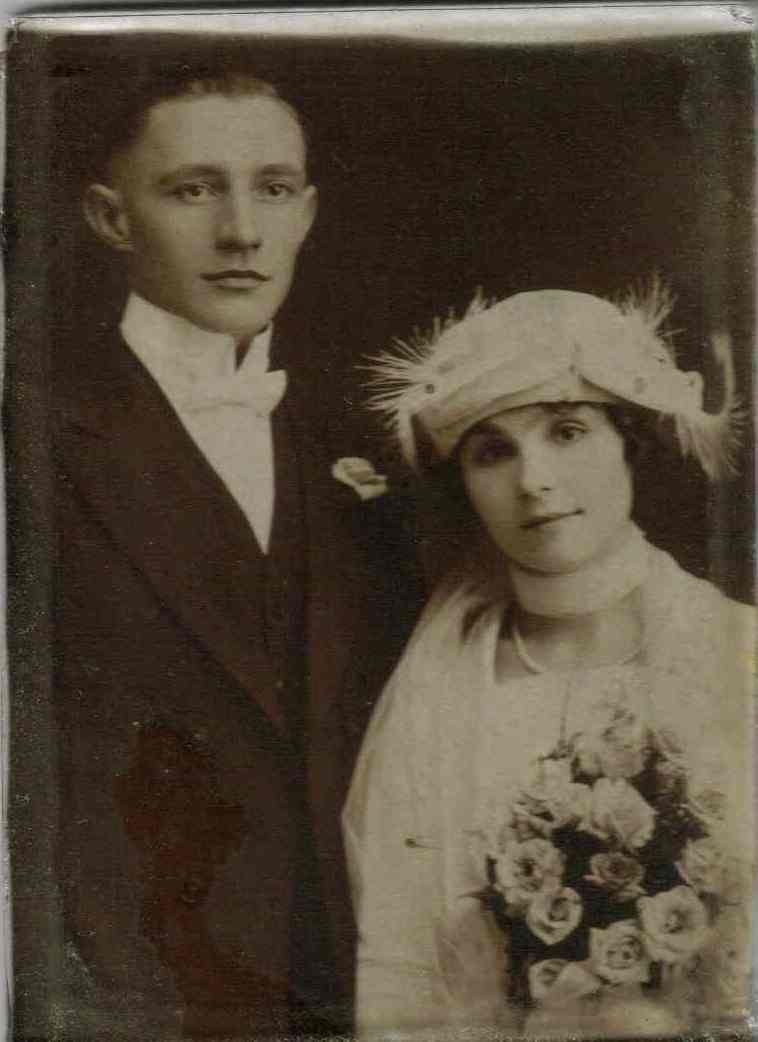
The 1920 census Walter (25) and Helen (24) lived in Detroit’s Ward 9 on St An…ir Street. He was a trimmer at the auto factory.
Soon the young couple’s daughters were born. Pris always said that her dad spoiled the girls. They hardly knew when the Great Depression hit (1929) because Walter bought them so many pretty dresses, etc.
Walter raised Flemish Giant rabbits (& family ate them!) which don’t look much different from our typical Eastern Cottontail. Check out Wikipedia.
He also bred and raced homing pigeons. The slow ones they cooked for dindin. The homing pigeons were derived from the wild Rock pigeons, so familiar on our city streets. They had an innate ability to find their way home from very long distances. The wild Rock pigeon uses magnetoreception to find its way back to its nest.
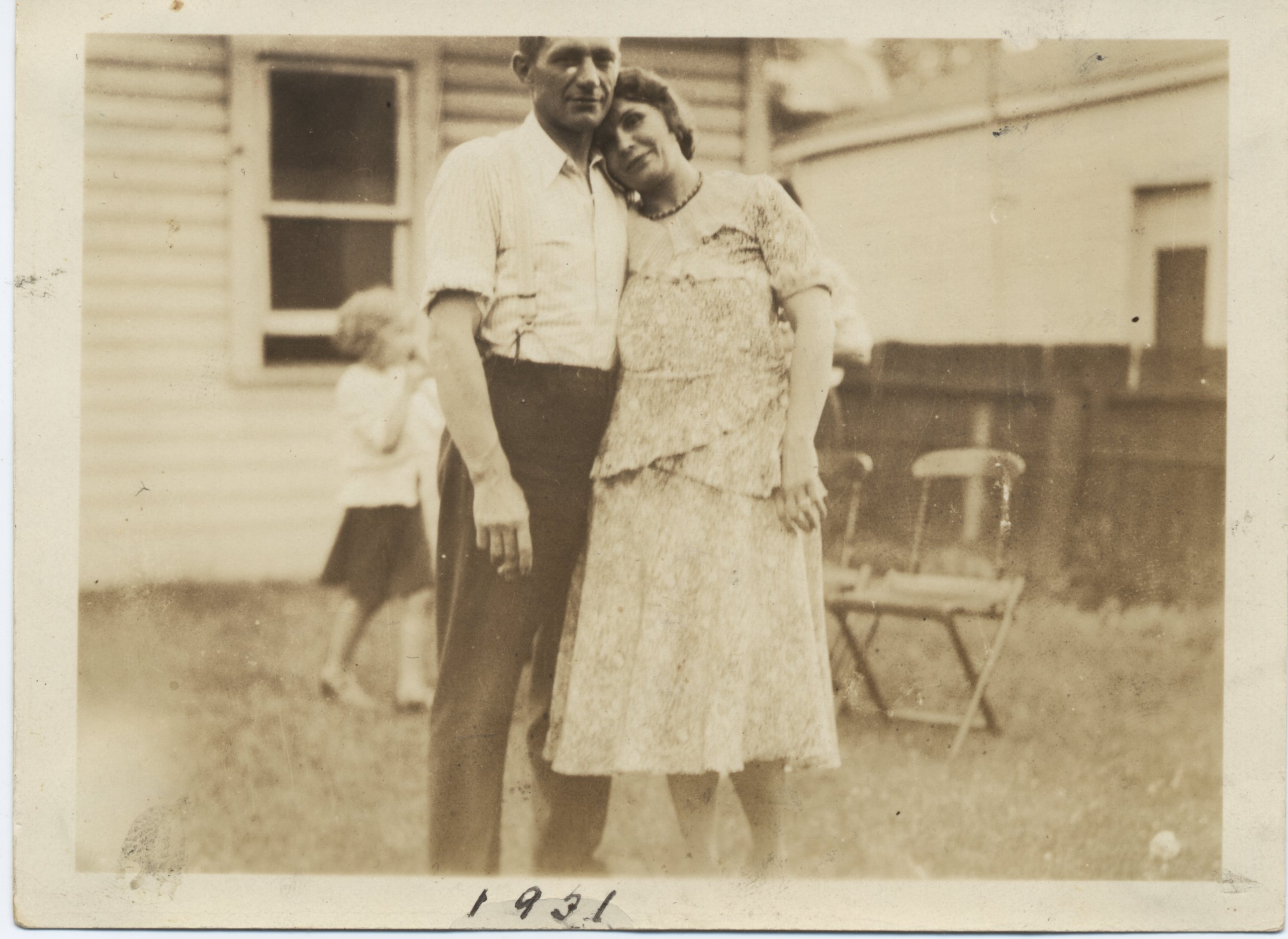 The 1930 census: The young family live at 4690 Bewick Ave in Detroit’s District 803. They own a radio and a home worth $7,000. Walter (35) is an automobile trimmer, and a veteran of the World War. Helen (33) Gladys (9) and Priscilla (7). Helen’s brother, Alec (Anthony) Moraniec (26) lived with them. He is a polisher at the automobile factory. A year later, Alec woud marry Walter’s sis, Angeline.
The 1930 census: The young family live at 4690 Bewick Ave in Detroit’s District 803. They own a radio and a home worth $7,000. Walter (35) is an automobile trimmer, and a veteran of the World War. Helen (33) Gladys (9) and Priscilla (7). Helen’s brother, Alec (Anthony) Moraniec (26) lived with them. He is a polisher at the automobile factory. A year later, Alec woud marry Walter’s sis, Angeline.

According to Gladys Lasecki, Walter made all of his furniture. He built Gladys and Hank’s living room set when they were first married. Marie has a small table that Walter made.

1940: The family now owns the home, worth $3000 that we grandchildren would hear about, at 4487 Townsend Ave in Detroit’s 17th Ward. Helen (44) is the respondent, Walter (46) works 24 hours as a trimmer at the Auto Factory. Helen’s brother, Alec worked 40 hours as a Band Saw operator (remember Alec went to school until 9th grade….Walter left school early because his father deserted the family). Walter made $1440; Alec $1500. Daughter, Priscilla, also lives at home.She is 17 and going to school.
1941: WW2 Draft registration: Walter was 47 years old. The family lived at 4487 Townsend Ave. Detroit. Walter worked at Plant 21, Harper, Fisher Body, Detroit MI. Frank Mitchell Pryzbilski, who we saw fighting with Walter in WW1, was unemployed and living with the Laseckis on Townsend.
LIFE ON THE FARM: Circa 1950:

When both of his daughters were married, Walter, tired of factory work and the mafia when they unionized, so he quit his job, sold their home and bought a farm in North Branch, Michigan. He hung a tire swing on the big tree in front of the farmhouse for the grandkids.
Walter and Helen raised chickens on the farm. When Marie visited, she collected the eggs. One day she witnessed Walter kill the chicken she had been playing with in the morning. He wrung the neck and then chopped off the head. The headless chicken would run around like crazy. Gramma made chicken soup that night and Marie couldn’t eat it. Sometimes they made blood soup too.
Walter Lasecki’s North Branch farm barn. The cow stayed underneath.
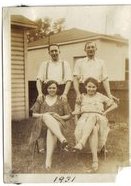
Marie and Greg snuck up to the forbidden corn silo so that they could slide down on the corn IT WAS FUN BUT they got into big trouble afterwards. Supposedly there were rats in the silo which was why they weren’t allowed in there.
Walter cut the horns off the cow because it bucked Marie.
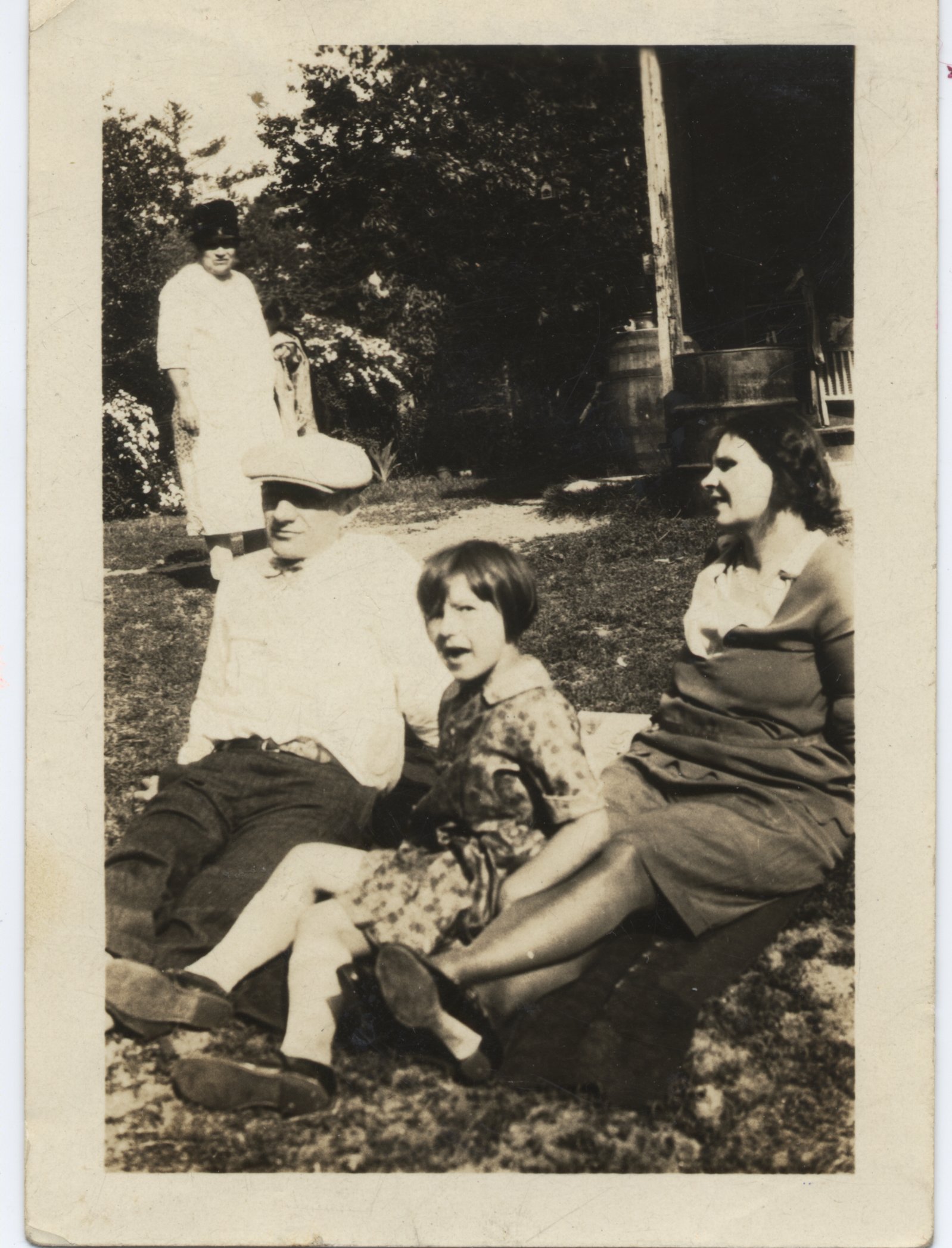
As so many of that generation, Walter brewed homemade beer. Great-Grandsons Nathaniel and Devin continue the tradition.
The Klauke cousins noticed how quiet Grampa Walter was during this time. He barely noticed when they came to visit at the farm because he would be working so hard, often with Uncle Alec Lasecki (Walter’s brother married to Helen’s sis, Angeline).
However, they fondly remember and continue the tradition of calling out “WATERMELON TIME” on hot summer afternoon, which sent the clan of kids running for a juicy sweet piece.
Pris also talked about how her cousins Jimmy and Robert Moraniec (Alex & Angeline’s boys) would come for long visits on the farm. They were practically like brothers to she and Gladys because of the nearness of ages.
DEATH
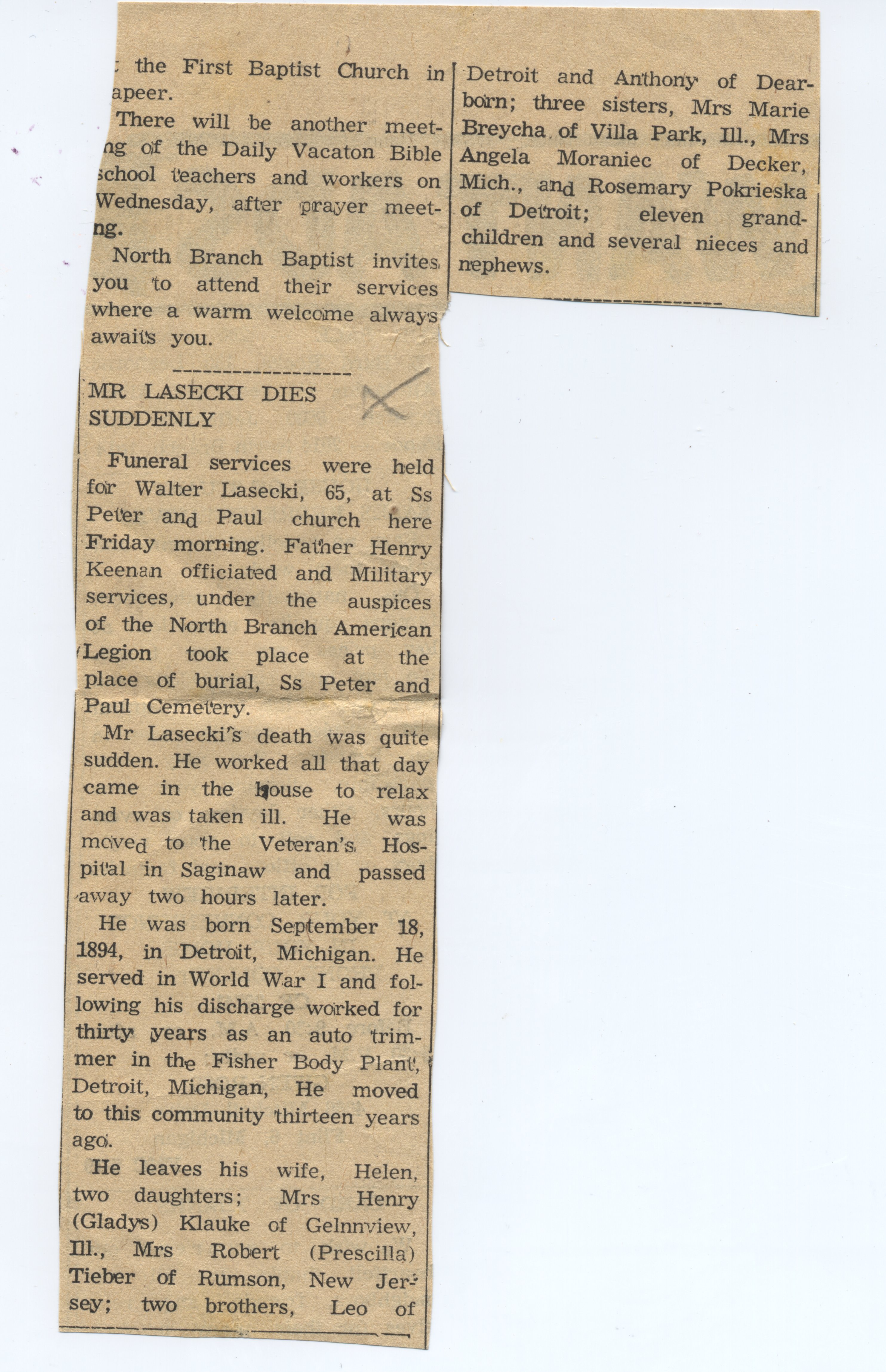
At 65 years of age, Walter suffered a heart attack and died on 10 May 1960 in North Branch, Lapeer county, Michigan. Daughter, Gladys said that his heart was weak due to extreme overwork on the farm. Perhaps the WW1 gas he was exposed to, had some long term effects to weaken his heart. His death certificate listed recent Myocardial Infarction, Arteriosclerotic Heart Disease of unknown length of time, and mural thrombus, contributory, also of unknown duration. The National Library of Medicine (stat pearls) says that mural thrombi:
“Mural thrombi are thrombi that attach to the wall of a blood vessel and cardiac chamber. Mural thrombus occurrence in a normal or minimally atherosclerotic vessel is a rare entity in the absence of a hypercoagulative state or inflammatory, infectious, or familial aortic ailments.”
 Priscilla talked about his constant rashes and his oatmeal baths. She thought the rashes were all psychologically induced. What he must have seen and experienced at Belleau Wood, could give anyone a rash!
Priscilla talked about his constant rashes and his oatmeal baths. She thought the rashes were all psychologically induced. What he must have seen and experienced at Belleau Wood, could give anyone a rash!
Helen paid $25.00 for Walter to be buried in SS Peter and Paul Catholic Cemetery in North Branch.

Helen then sold the farm and moved to Priscilla’s carriage house in Locust NJ. She was about 64 years old and would live another 15 years.
